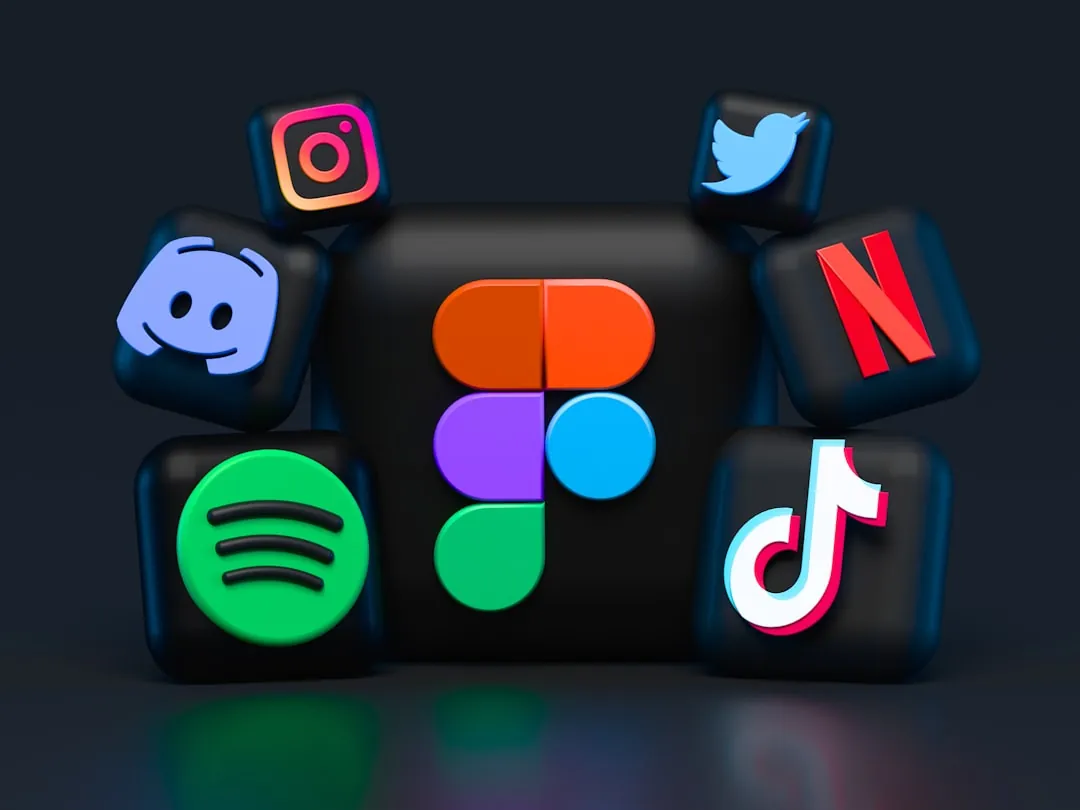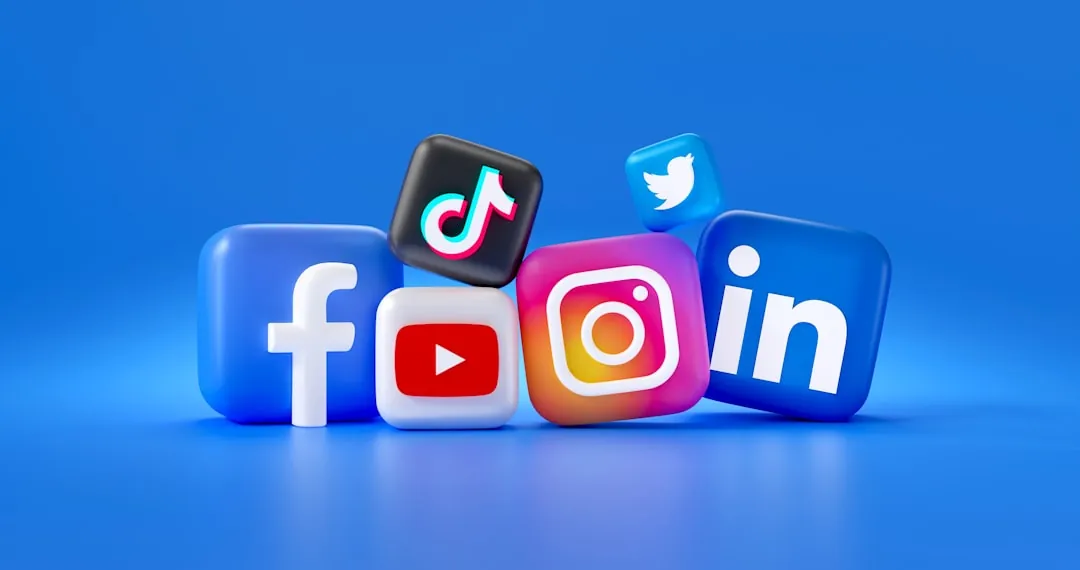Alright, listen up! You're here because you want to earn money online. You've landed on Earn With Web, and that's a great first step. Today, we're diving headfirst into a topic that can be a total game-changer for your online income: social media marketing.
I know, I know. You're probably thinking, "Social media? I already scroll through Instagram for hours every day!" But let's be real – passively consuming content is a world away from strategically using social media to build a brand, connect with customers, and ultimately, line your pockets.
Forget cat videos (okay, maybe watch a few on your break!). We're talking about turning your social media presence into a profit-generating machine. This isn't about becoming an influencer overnight; it's about understanding the fundamentals, applying them consistently, and watching your online earnings grow.
I've been there. Back in the day, I thought social media was just for sharing vacation pics and complaining about traffic. Then, I launched my first online store selling handmade jewelry. Crickets. Zero sales. Until I started taking social media seriously. A few targeted Facebook ads, some engaging Instagram content, and suddenly, I was shipping jewelry all over the country.
The point? Social media works if you work it right.
So, buckle up. We're going to break down everything you need to know, from choosing the right platforms to crafting compelling content, running effective ads, and tracking your results. Let's get started!
Choosing Your Battleground: Which Social Media Platform is Right for You?
Choosing the right platform is crucial. Think of it like this: you wouldn't go fishing in the desert, right? You need to be where your ideal customers are hanging out.
First things first: Who is your target audience?
- Demographics: Age, gender, location, income level, education.
- Interests: What are they passionate about? What problems do they face? What kind of content do they consume?
- Online Behavior: Where do they spend their time online? Which social media platforms do they use most frequently?
Let's say you're selling handmade organic skincare products. Your ideal customer might be a woman aged 25-45, interested in natural beauty, eco-friendly living, and wellness. She's probably active on Instagram, Pinterest, and maybe even Facebook in relevant groups.
On the other hand, if you're offering B2B software solutions, LinkedIn is probably your best bet. If you are targeting Gen Z, then TikTok and Snapchat may be the most advantageous.
Here's a quick rundown of some popular platforms and their strengths:
- Facebook: Still a behemoth with a massive user base. Great for reaching a wide audience, building communities, and running targeted ads.
- Pros: Large audience, powerful ad targeting, community building.
- Cons: Organic reach is declining, can be noisy, algorithm changes frequently.
- Instagram: Visually-driven platform perfect for showcasing products, building a brand aesthetic, and engaging with followers.
- Pros: High engagement rates, visually appealing, good for brand building.
- Cons: Requires high-quality visuals, can be time-consuming to create content, algorithm favors frequent posters.
- Twitter: Real-time updates, news, and discussions. Great for building relationships with industry influencers and participating in trending conversations.
- Pros: Real-time updates, excellent for news and discussions, good for influencer outreach.
- Cons: Short attention spans, can be overwhelming, character limit can be restrictive.
- LinkedIn: Professional networking platform ideal for B2B marketing, lead generation, and building authority in your industry.
- Pros: Targeted professional audience, great for B2B, lead generation, and building authority.
- Cons: Can be formal, less engaging for personal brands, requires professional content.
- Pinterest: Visual discovery platform perfect for driving traffic to your website, showcasing products, and sharing ideas.
- Pros: High traffic potential, great for visual content, long shelf life for pins.
- Cons: Requires visually appealing content, can be time-consuming to create pins, algorithm changes frequently.
- TikTok: Short-form video platform popular with younger audiences. Great for creating viral content, showcasing your personality, and driving brand awareness.
- Pros: High engagement rates, potential for viral content, fun and creative.
- Cons: Requires consistent video production, algorithm favors specific content types, shorter attention spans.
Actionable Tip: Don't try to be everywhere at once. Start with one or two platforms where your target audience is most active and focus on building a strong presence there. You can always expand later.

Crafting Compelling Content: Stop the Scroll!
Once you've chosen your platform(s), it's time to create content that grabs attention and keeps people coming back for more. Remember, you're not just selling a product or service; you're selling a solution to a problem, a feeling, or an experience.
Here are some key content creation tips:
- Know Your Audience: Revisit your target audience research. What are their pain points? What questions do they have? What kind of content do they enjoy?
- Provide Value: Share helpful tips, tutorials, behind-the-scenes glimpses, and inspiring stories.
- Be Authentic: Let your personality shine through! People connect with real people, not faceless corporations.
- Use High-Quality Visuals: Invest in good lighting, a decent camera (your phone works!), and visually appealing graphics.
- Write Captivating Captions: Don't just post a picture and call it a day. Tell a story, ask a question, or offer a compelling call to action.
- Experiment with Different Formats: Try videos, images, carousels, stories, live streams, and more.
- Stay Consistent: Post regularly to keep your audience engaged and your brand top-of-mind.
Here are some content ideas based on platform:
- Facebook: Share blog posts, run contests, host Q&A sessions, create Facebook Groups for your community.
- Instagram: Post visually stunning photos and videos, use Instagram Stories to share behind-the-scenes content, create Reels to showcase your personality.
- Twitter: Share news articles, participate in trending conversations, run polls, and engage with other users.
- LinkedIn: Share industry insights, publish articles, participate in relevant groups, and connect with other professionals.
- Pinterest: Create visually appealing pins that link to your website, organize your pins into themed boards, and participate in group boards.
- TikTok: Create short, engaging videos that showcase your personality, participate in trending challenges, and use relevant hashtags.
Example Time: Let's say you're selling online courses on web design.
- Bad Content: "Check out my new web design course! It's only $99!" (Salesy and boring!)
- Good Content: "Struggling to create a website that converts visitors into customers? I'm sharing my top 3 web design tips that will instantly boost your conversion rate! (Link in bio!) #webdesign #conversionrate #websitedesign" (Provides value, addresses a pain point, and includes a clear call to action.)
Tools & Resources:
- Canva: For creating stunning graphics and social media templates.
- Later or Buffer: For scheduling your social media posts.
- Unsplash or Pexels: For free stock photos.
- Grammarly: For proofreading your captions and articles.
The Power of Storytelling
People don't just buy products; they buy stories. Craft compelling narratives around your brand and your products. Share your "why" – why you started your business, what problems you're trying to solve, and what impact you want to make on the world.
My Anecdote: When I started selling my jewelry, I didn't just post pictures of the necklaces. I told the stories behind them – the inspiration, the materials I used, and the women who wore them. People connected with those stories, and that's what drove sales.
Hashtags Are Your Friends (Use Them Wisely!)
Hashtags are like keywords for social media. They help people discover your content when they're searching for specific topics. Research relevant hashtags in your niche and use them strategically in your posts.
Pro Tip: Don't just use the most popular hashtags. Mix it up with a combination of broad, niche-specific, and branded hashtags. Use hashtag tracking tools like Hashtagify or RiteTag to find the best hashtags for your content.
Social Media Advertising: Turbocharge Your Reach
Organic reach is great, but if you really want to scale your social media marketing efforts, you need to invest in advertising. Social media advertising allows you to target specific demographics, interests, and behaviors, ensuring that your message reaches the right people.
Here's a quick overview of social media advertising options:
- Facebook Ads: Highly customizable ad platform with powerful targeting options. Great for driving traffic to your website, generating leads, and increasing sales.
- Instagram Ads: Visually appealing ads that blend seamlessly into the Instagram feed. Great for brand awareness, product promotion, and driving traffic to your website.
- Twitter Ads: Promoted tweets, accounts, and trends that can help you reach a wider audience and drive engagement. Great for brand awareness, lead generation, and driving traffic to your website.
- LinkedIn Ads: Targeted ads that reach professionals in specific industries and roles. Great for B2B marketing, lead generation, and building brand authority.
- Pinterest Ads: Promoted pins that can help you reach a wider audience and drive traffic to your website. Great for product promotion, driving traffic to your website, and generating leads.
- TikTok Ads: Engaging video ads that can reach a younger audience and drive brand awareness. Great for brand awareness, product promotion, and driving traffic to your website.
Actionable Tip: Start small and test different ad creatives, targeting options, and budgets to see what works best for your business. Use A/B testing to optimize your campaigns and maximize your ROI.
Budgeting Example: If you're just starting out, you might allocate $5-$10 per day per platform for your social media ads. As you see positive results, you can gradually increase your budget.
Key Metrics to Track:
- Reach: How many people saw your ad?
- Impressions: How many times was your ad displayed?
- Click-Through Rate (CTR): What percentage of people clicked on your ad?
- Conversion Rate: What percentage of people who clicked on your ad completed a desired action (e.g., made a purchase, filled out a form)?
- Cost Per Acquisition (CPA): How much did it cost you to acquire a customer?

Building a Community: It's Not Just About Selling!
Social media is about being social. It's about building relationships with your followers, fostering a sense of community, and creating a loyal fan base.
Here's how to build a thriving online community:
- Engage with Your Followers: Respond to comments, answer questions, and participate in conversations.
- Run Contests and Giveaways: Reward your followers for their loyalty.
- Host Live Streams and Q&A Sessions: Connect with your audience in real-time.
- Create a Facebook Group or Online Forum: Provide a space for your followers to connect with each other.
- Collaborate with Other Businesses and Influencers: Expand your reach and tap into new audiences.
Example: I have a Facebook group specifically for my jewelry customers. I share exclusive discounts, ask for feedback on new designs, and encourage members to share photos of themselves wearing my jewelry. It's become a really supportive and engaged community.
Internal Linking Suggestion: Link back to other relevant blog posts on Earn With Web, such as "How to Create a Profitable Online Course" or "Affiliate Marketing for Beginners."
Analyzing Your Results: Track, Tweak, and Conquer
Social media marketing is an ongoing process. You need to constantly track your results, analyze your data, and make adjustments to your strategy as needed.
Use social media analytics tools to track key metrics such as:
- Follower Growth: Are you gaining new followers?
- Engagement Rate: How are people interacting with your content?
- Website Traffic: Is your social media activity driving traffic to your website?
- Conversion Rate: Are you converting followers into customers?
Tools & Resources:
- Google Analytics: For tracking website traffic and conversions.
- Social Media Analytics Dashboards: Each platform has its own analytics dashboard (e.g., Facebook Insights, Instagram Insights, Twitter Analytics).
- Third-Party Analytics Tools: Tools like Sprout Social and Hootsuite offer more advanced analytics features.
Actionable Tip: Set specific, measurable, achievable, relevant, and time-bound (SMART) goals for your social media marketing efforts. For example, "Increase website traffic by 20% in the next quarter."
By consistently tracking your results and making adjustments to your strategy, you can optimize your social media marketing efforts and maximize your return on investment.

Common Mistakes to Avoid
- Being Too Salesy: Nobody likes a constant sales pitch. Focus on providing value and building relationships.
- Ignoring Your Audience: Engage with your followers and respond to their questions and comments.
- Posting Inconsistent Content: Stay consistent with your posting schedule.
- Using Poor-Quality Visuals: Invest in good lighting and a decent camera.
- Not Tracking Your Results: Track your metrics and make adjustments to your strategy as needed.
- Buying Fake Followers: It's tempting, but it's a waste of money and can damage your reputation.
Conclusion: Your Social Media Success Starts Now!
Social media marketing can be a powerful tool for earning money online. By choosing the right platforms, crafting compelling content, running targeted ads, building a community, and analyzing your results, you can unlock the potential of social media and take your online business to the next level.
Remember, it takes time and effort to build a successful social media presence. Don't get discouraged if you don't see results overnight. Stay consistent, keep learning, and never stop experimenting.
Ready to take your social media marketing to the next level? Check out our premium course on [Link to your premium course] where we dive deep into advanced strategies and techniques.
Start Building Your Social Media Empire Today!
Frequently Asked Questions (FAQ)
Q: How much does it cost to start social media marketing?
A: It depends on your strategy. You can start with free organic marketing tactics and gradually invest in paid advertising as you see results.
Q: How long does it take to see results from social media marketing?
A: It varies depending on your niche, target audience, and marketing strategy. It can take several weeks or months to see significant results. Be patient and stay consistent.
Q: Do I need to hire a social media manager?
A: If you're short on time or lack the expertise, hiring a social media manager can be a good investment. However, you can also manage your social media marketing yourself if you're willing to learn and put in the effort.
Q: What are some good resources for learning more about social media marketing?
A: There are many great resources available online, including blogs, articles, courses, and podcasts. Some popular resources include Social Media Examiner, HubSpot Academy, and Neil Patel's blog.
Q: What's the biggest mistake people make in social media marketing?
A: The biggest mistake is being inconsistent. You need to post regularly, engage with your followers, and track your results to see success. Also, don't be afraid to experiment and try new things!